Pallet Inverter Safety Tips for Colombia Plants Facing reducing manual strain in coffee and fruit logistics
The coffee and fruit industries are the lifeblood of the Colombian economy. But this success is often built on the backs of workers performing intense manual labor. Day after day, lifting heavy sacks of green coffee beans or crates of fresh fruit leads to chronic injuries, high employee turnover, and operational bottlenecks. I've seen it myself in my early days in the factory world; the physical toll of manual handling is a hidden cost that eats away at productivity. This strain isn't just a human issue—it's a direct threat to your business. Injuries mean lost workdays, compensation claims, and a slower supply chain. In a competitive global market, these inefficiencies can crush your profit margins. You need a better way, a solution that protects your people and your bottom line. A pallet inverter is a powerful tool to eliminate this dangerous manual work, but introducing any heavy machinery requires a deep commitment to safety. This is where my journey can help yours.
The most effective pallet inverter safety strategy for Colombian coffee and fruit logistics focuses on four key pillars: selecting a machine with critical safety features like pressure-sensitive clamps and physical guarding, implementing comprehensive hands-on operator training in Spanish, adhering to a strict preventative maintenance schedule, and integrating the inverter with your facility's wider safety systems. By treating safety as a complete system, not just a feature on a machine, you can drastically reduce manual strain while preventing new mechanical hazards.
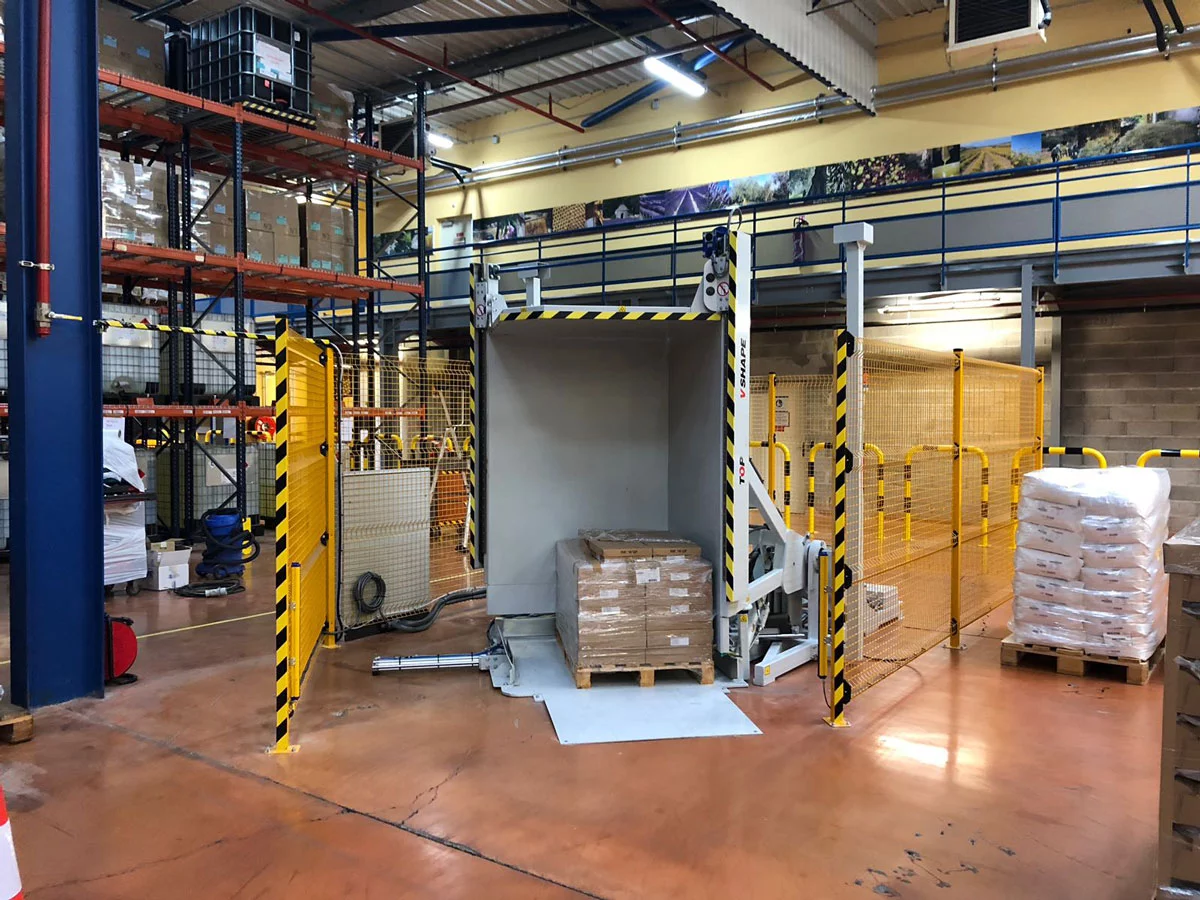
I understand the pressure to modernize. As an engineer who built a factory from the ground up, every investment had to count. Automating processes like pallet swapping is a clear path to efficiency, but it's a path with potential pitfalls. Simply buying a machine is not the solution. The real solution is building a culture of safety around that machine. It’s about ensuring that this powerful tool enhances your operation without introducing new risks. In my experience, the companies that succeed are the ones that think about safety from day one. They don't just ask, "How fast can it work?" They ask, "How can we make it work safely for our people, with our products, in our facility?" Let's break down how you can do exactly that.
What are the most critical safety features to look for in a pallet inverter for Colombian coffee and fruit operations?
You are ready to invest in a pallet inverter to protect your workers and speed up your logistics. But as you look at different models and technical specifications, the details can be overwhelming. Not all machines are created equal, and choosing one without the right safety features is like buying a high-performance vehicle without seatbelts or airbags. It's a risk you can't afford to take. A poor choice made to save a little money upfront could lead to catastrophic equipment damage, loss of valuable product—just imagine a full pallet of premium Castillo coffee beans spilling across the floor—or worse, a serious operator injury. The initial saving is quickly erased by a single major incident. The solution is to arm yourself with knowledge and know exactly which non-negotiable safety features to demand. Let's walk through the critical components that will protect your operators, your delicate products, and your entire operation.
The most critical safety features for a pallet inverter used in coffee and fruit logistics are a robust perimeter guarding system, such as physical fencing or light curtains, a dual-clamping pressure system to secure potentially unstable loads, multiple and easily accessible emergency stop (E-stop) buttons, and a formal lock-out/tag-out (LOTO) provision for safe maintenance. These features work together to create layers of protection. For the unique loads in your industry, like sacks of coffee that can shift or crates of fruit that can be uneven, adjustable clamping pressure is not a luxury; it is a necessity to prevent product damage and ensure stability during the inversion cycle.
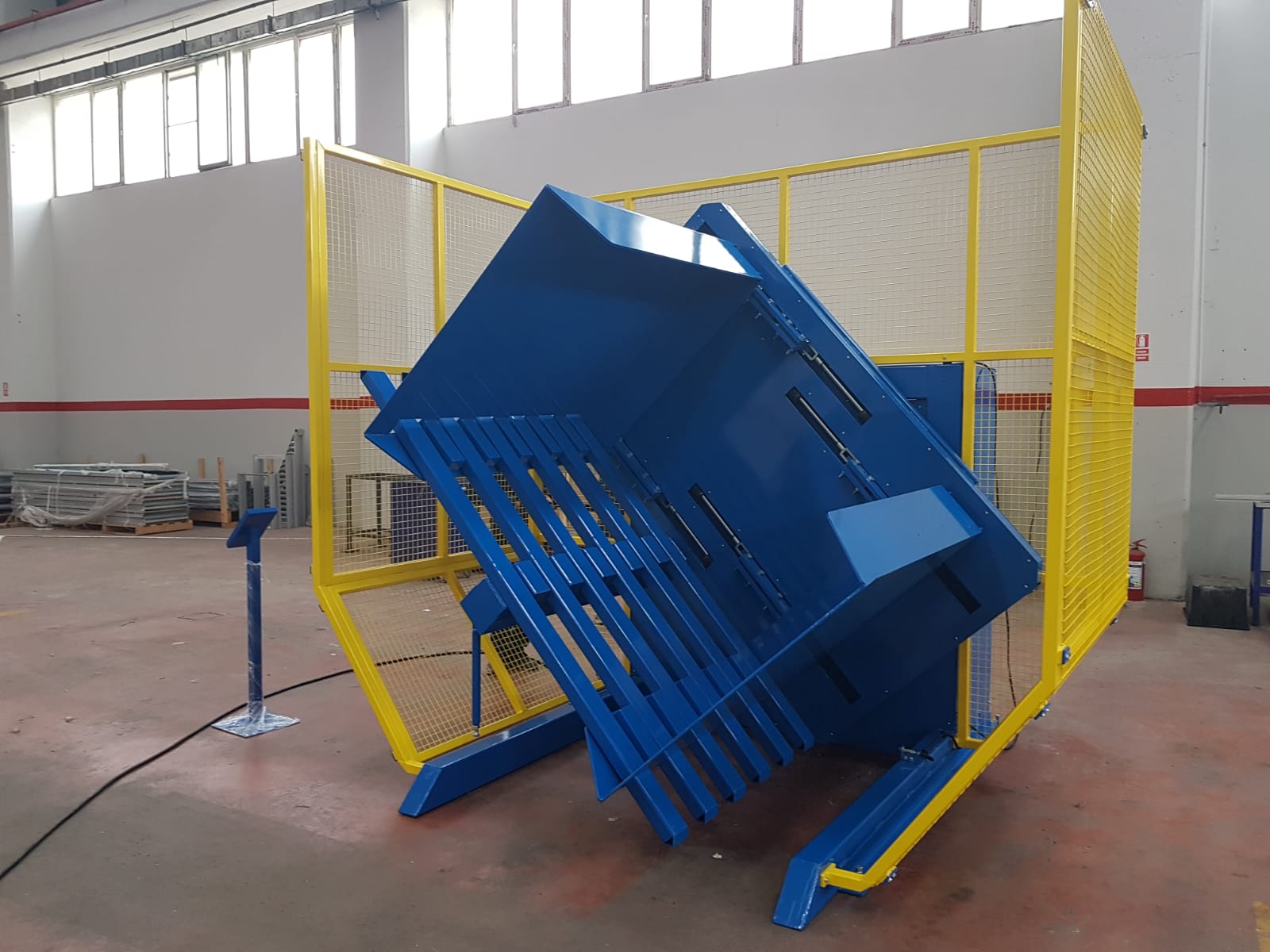
When I was designing and selecting equipment for my own factory, I learned to think in terms of "what-if" scenarios. What if an operator walks into the operating area by mistake? What if a pallet is loaded incorrectly? What if a hydraulic line fails? Your machine's safety features are the answers to these questions. They are your built-in insurance policy.
Physical Guarding vs. Light Curtains
The first line of defense is preventing unauthorized access to the machine's moving parts during a cycle. You have two primary options here: physical fencing and light curtains.
- Physical Fencing: This is a fixed barrier, usually made of heavy-duty wire mesh, that surrounds the inverter's operational footprint. It includes an interlocking gate. If the gate is opened, a sensor immediately stops the machine's cycle. This is a very direct and foolproof method. It's often the best choice in high-traffic areas where forklifts and personnel are constantly moving, as it provides a hard physical barrier that prevents accidental entry.
- Light Curtains: These are advanced safety devices that project a grid of infrared beams across the machine's access points. If any object, like a person's hand or a forklift mast, breaks a beam, the machine instantly stops. Light curtains offer more flexibility and can speed up loading/unloading cycles since there is no physical gate to open and close. However, they require clean lenses and a work environment free of excessive dust—something to consider in a coffee processing facility.
For most fruit and coffee operations, I recommend starting with robust physical fencing. It's reliable, easy to understand for all workers, and less susceptible to environmental factors.
Clamping Pressure and Load Stability
Coffee sacks are heavy and can shift. Crates of avocados or flowers can be unevenly stacked. A standard pallet inverter with a simple on/off clamping function can be a problem. Too much pressure can crush your valuable fruit. Too little pressure, and the entire load can collapse mid-rotation. This is why you must insist on a machine with:
- Adjustable Clamping Pressure: This allows your operators to set the ideal pressure based on the specific product being handled. They can use a lower pressure for delicate fruits and a higher pressure for stable, heavy sacks of coffee.
- Dual Clamping Tables: Look for models where both the top and bottom platforms are powered. This ensures the load is held securely from both sides, providing much greater stability throughout the 180-degree rotation.
User Controls and Emergency Systems
The control panel should be intuitive and clearly labeled, ideally in Spanish for your team in Colombia. But most importantly, the emergency systems must be foolproof.
- Multiple E-Stop Buttons: There should be large, red emergency stop buttons on the main control panel and at other key points around the machine. An operator must be able to shut down all motion instantly from any position.
- Lock-Out/Tag-Out (LOTO): This is non-negotiable for maintenance safety. The machine must have a designated main power disconnect where a maintenance technician can attach their personal lock. This ensures that the power cannot be turned back on accidentally while they are working on the machine, preventing horrific injuries.
| Safety Feature Tier | Description | Best For |
|---|---|---|
| Standard (Essential) | Physical fencing with interlock gate, multiple E-stops, LOTO provision, basic fixed clamping pressure. | Small-scale operations, facilities with lower traffic and very consistent pallet types. |
| Professional (Recommended) | Light curtains or fencing, adjustable clamping pressure, dual powered clamping tables, intuitive control panel. | Most medium to large coffee and fruit logistics hubs handling a variety of products. This is the sweet spot for safety and flexibility. |
| Advanced (Integrated) | All Professional features plus full system integration with area scanners, WMS/MES connectivity, and automated fault diagnostics. | Large, highly automated export facilities aiming for maximum efficiency and data-driven safety management. |
How can proper operator training significantly reduce accidents with pallet inverters in busy logistics hubs?
You have done your due diligence and invested in a top-of-the-line pallet inverter with all the best safety features. The machine is installed and gleaming on your production floor. Yet, you still hear about near-misses or small incidents that cause delays. The problem, in this case, isn't the machine; it's the human element. An untrained or poorly trained operator can bypass safety features, use the machine for loads it wasn't designed for, or fail to recognize the early warning signs of a malfunction. This behavior turns a state-of-the-art safety tool into a liability, leading to costly downtime, damaged product, or a tragic accident. The only solution is to build a culture of competence and safety through a comprehensive and continuous training program that goes far beyond just showing someone the "start" button.
Proper operator training is the most critical factor in reducing pallet inverter accidents because it empowers the user to be the first line of defense. A well-trained operator understands the machine's operational limits, knows the correct procedures for loading unstable products like coffee sacks, can execute emergency protocols without hesitation, and performs daily pre-use safety checks. This knowledge transforms them from a simple button-pusher into a responsible guardian of the equipment, their colleagues, and themselves. In essence, training bridges the gap between a machine's safety features and real-world safe operation.
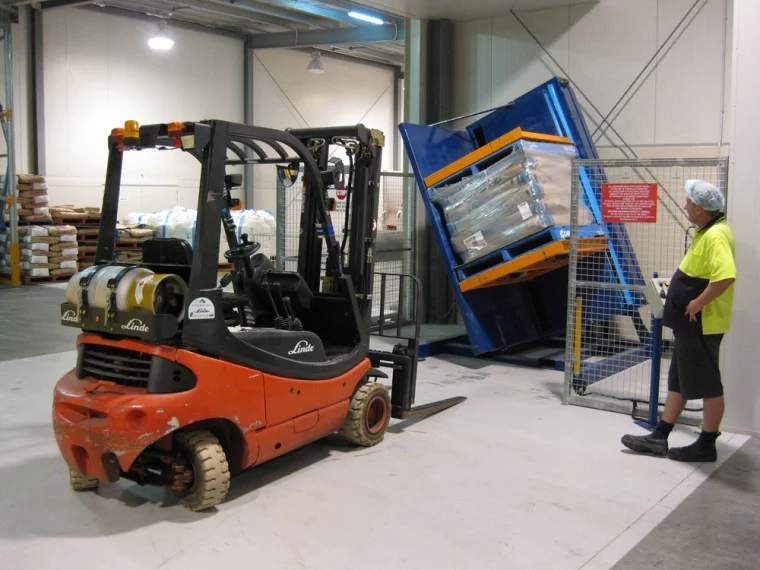
I remember visiting a client's facility years ago. They had a great machine but were experiencing frequent shutdowns. The issue wasn't mechanical; it was operational. Operators were trying to "beat the clock" by loading pallets slightly off-center, which tripped the safety sensors. They saw the safety system as an obstacle. After we implemented a formal training program that explained why centering was important for stability and safety, the problem disappeared. They began to see the safety features as tools that helped them do their job better and more securely. That's the power of good training.
The Core Components of a Training Program
A truly effective training program is not a one-time event. It should be a structured process that combines knowledge with practical skill.
- Classroom Theory: This foundational step should happen before an operator ever touches the machine. It involves reviewing the manufacturer's manual (in Spanish), watching safety videos, and having an open discussion about the specific hazards of the machine. Key topics include understanding the machine's load capacity, the function of every button and warning light, and the facility's specific LOTO procedures.
- Supervised Hands-On Practice: Theory is useless without practice. The next step is one-on-one training on the machine with a qualified supervisor. The operator should start with empty pallets, then move to stable dummy loads, and only then progress to actual product. They must demonstrate proficiency in loading, operating the control panel, and performing an emergency stop.
- Competency Evaluation: Before an operator is certified to use the machine independently, they must pass a formal evaluation. This should include a short written quiz on safety rules and a practical test where they must safely and efficiently perform a complete operating cycle under observation.
Training for Colombian Coffee and Fruit Logistics
Your training must address the unique challenges of your products.
- Handling Unstable Loads: Train operators on how to inspect an incoming pallet of coffee sacks. Are they stacked correctly? Is the plastic wrap secure? They need to know when a load is too risky to invert and requires re-stacking first.
- Managing Delicate Products: For fruit and flowers, operators must be trained on using the adjustable clamping pressure settings. Create a simple chart near the machine that specifies the correct pressure setting for each product type (e.g., "Bananas: Setting 3," "Flowers: Setting 2").
- Emergency Scenarios: What should an operator do if a sack splits open mid-cycle? Or if a box of fruit gets crushed? Role-play these scenarios during training so that the correct, safe response becomes second nature.
From Certification to Continuous Improvement
Safety training is not a destination; it's a continuous journey.
- Formal Certification: Every authorized operator should have a formal, documented certification that is kept on file.
- Refresher Training: At least once a year, all certified operators should undergo a brief refresher course and practical evaluation to ensure habits haven't slipped and to cover any new procedures.
- New Hire Training: Have a standard process for training and certifying new employees. Never let an uncertified employee operate the machine, not even "for a minute."
| Training Module | Key Learning Objectives | Method |
|---|---|---|
| 1. Safety Fundamentals | Understand all warning labels, identify E-stop locations, explain LOTO procedure. | Classroom, Manual Review |
| 2. Pre-Operation Inspection | Perform a daily check of the machine's physical and functional status using a checklist. | Hands-on Demonstration |
| 3. Safe Loading/Unloading | Demonstrate correct forklift approach, pallet centering, and load inspection. | Supervised Practice |
| 4. Machine Operation | Operate the control panel, correctly set clamping pressure, run a full cycle safely. | Supervised Practice |
| 5. Emergency Procedures | Demonstrate immediate use of E-stop, explain procedure for machine failure or product spill. | Practical Drill |
What are the key maintenance checks to ensure long-term pallet inverter safety and reliability?
Your pallet inverter has been installed and is now a core part of your operation. Your team is trained, and the efficiency gains are clear. It's easy to fall into a routine and become complacent, assuming the machine will simply keep running perfectly day after day. This is a quiet but dangerous assumption. Over time, hydraulic hoses can degrade from pressure and heat, electrical connections can vibrate loose, and critical moving parts like chains and bearings wear down. A sudden failure is never convenient. If it happens during your peak coffee harvest or fruit export season, it can bring your entire logistics chain to a grinding halt, costing you thousands in delays and potential contract penalties. The only way to combat this is with a proactive, scheduled maintenance plan. By looking for small problems on a regular basis, you can prevent them from becoming catastrophic failures.
The key maintenance checks for a pallet inverter are organized into a tiered schedule: daily visual inspections by the operator, weekly checks of fluids and safety functions by a team lead, monthly detailed inspections of mechanical and electrical components by the maintenance team, and a comprehensive annual service, preferably by a certified technician. This structured approach ensures that nothing is missed and transforms maintenance from a reactive fire-fight into a proactive strategy for ensuring long-term safety and achieving the kind of 95% uptime that industry leaders strive for.
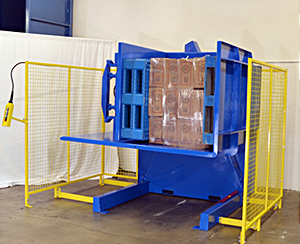
In my own factory, we lived by the motto: "Take care of your machines, and they will take care of you." We learned the hard way that skipping a weekly check to save an hour could lead to a two-day shutdown the following month. We developed simple, laminated checklists that we attached to each machine. It became part of the culture. This discipline didn't just prevent breakdowns; it made the entire operation safer because our team was constantly interacting with and observing the equipment's condition. A well-maintained machine is a safe machine.
Creating a Tiered Maintenance Schedule
A one-size-fits-all approach doesn't work. Maintenance should be layered, with different frequencies and levels of detail.
- Daily (Operator Level): This is a quick, 5-minute pre-use inspection performed by the certified operator at the start of their shift. It's a visual and functional check. Is the area around the machine clear? Are all guards in place? Does the E-stop button work? Any visible fluid leaks? This simple check can catch 80% of potential issues before they become problems.
- Weekly (Supervisor/Lead Tech Level): This is a more detailed check. It includes everything from the daily check plus tasks like checking the hydraulic fluid level, wiping down sensors and light curtains, and checking chain tension. This person should document their findings in a logbook.
- Monthly (Maintenance Team Level): This requires more technical skill. The maintenance team should inspect hydraulic hoses for cracks or bulges, check electrical connections in the control cabinet for tightness, lubricate all designated grease points, and test every single safety function (interlock gates, sensors, etc.) to ensure they are working perfectly.
- Annual (Professional Service): Once a year, it's wise to have the machine serviced by a certified technician from the manufacturer or a trusted partner. They can perform more complex tasks like changing the hydraulic fluid and filters, running advanced diagnostics on the PLC, and inspecting internal components that are not easily accessible.
The Critical Role of Record-Keeping
A maintenance plan is only as good as its documentation. A detailed maintenance logbook for each machine is essential.
- Tracking History: The logbook provides a running history of the machine. You can see if a specific issue is recurring, which might indicate a deeper problem.
- Predictive Maintenance: This data is the first step toward predictive maintenance. If you know a certain hydraulic hose needs to be replaced every 18 months on average, you can schedule its replacement at 16 months, preventing an unexpected failure. This is how you move from being reactive to being proactive.
- Accountability and Compliance: A well-kept log demonstrates to safety inspectors and your insurance company that you are performing due diligence and are serious about maintaining a safe workplace.
| Frequency | Performed By | Key Checks |
|---|---|---|
| Daily | Operator | Clear work area, guards in place, visual check for leaks, test E-stop. |
| Weekly | Supervisor | Daily checks + Hydraulic fluid level, clean sensors, check chain tension, document in log. |
| Monthly | Maintenance Team | Weekly checks + Inspect hoses & fittings, check electrical cabinet, lubricate moving parts, test all safety interlocks. |
| Annually | Certified Technician | Monthly checks + Change hydraulic fluid & filters, inspect motor & gearbox, PLC diagnostic check, comprehensive safety system validation. |
How do modern pallet inverters integrate with safety systems to create a safer warehouse environment?
A pallet inverter is a powerful machine, but it doesn't operate in a vacuum. It sits within a dynamic, busy warehouse ecosystem filled with moving forklifts, walking personnel, and potentially other automated equipment. Treating the inverter as a standalone island creates dangerous blind spots in your overall safety strategy. A forklift operator might not see the inverter is active and turn into its operating zone. An Automated Guided Vehicle (AGV) might not have the programming to recognize the machine's state, leading to a collision. These integration gaps are where the most serious and complex accidents can occur. The solution is to think of your pallet inverter not as a solo performer, but as a member of a team. Modern machines are designed for this, with the ability to communicate and integrate with your larger facility safety systems to create a truly cohesive and secure environment.
Modern pallet inverters integrate with wider warehouse safety systems through both physical and digital connections. Physically, they use interlocking safety gates and area scanners that prevent forklifts and personnel from entering the operating zone while a cycle is in progress. Digitally, they can connect to your Warehouse Management System (WMS) or Manufacturing Execution System (MES) to coordinate tasks and prevent conflicting equipment commands. This level of integration elevates the machine from a simple tool to a smart, communicative node in your logistics network, creating a far safer and more efficient workflow.
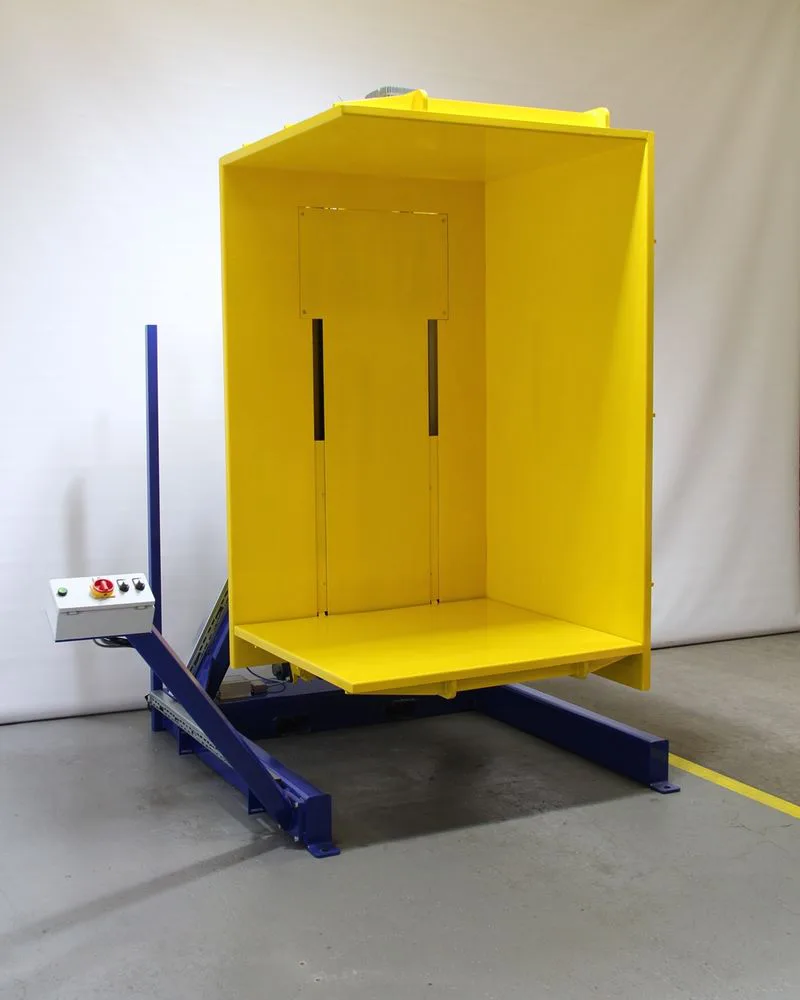
I've seen this evolution firsthand. Early automation projects often focused on the efficiency of a single machine. But the real breakthrough comes when the machines start talking to each other and to the central management system. This aligns perfectly with the goals of forward-thinking leaders like Javier Morales, who want to achieve total production visualization and smart scheduling. When your pallet inverter can tell your WMS that it's busy, the WMS can then hold the next forklift assignment for a few seconds, preventing traffic jams and unsafe interactions. This is the foundation of a smart, safe factory.
Level 1: Physical Interlocks and Area Scanners
This is the most fundamental and crucial level of integration.
- Interlocking Gates: As discussed before, the safety fencing around the inverter should have a gate with a sensor. This sensor is wired into the inverter's control system. If the gate is open, the inverter cannot start. If the gate is opened mid-cycle, the inverter immediately stops. This is a direct, hard-wired link between the machine and its immediate environment.
- Area Scanners: For more advanced or open-plan layouts, a laser area scanner can be used. It creates a defined "danger zone" and a "warning zone" around the machine. If a forklift enters the outer warning zone, a yellow light and horn might activate. If it proceeds into the inner danger zone, the scanner sends a stop signal to the inverter, halting all motion.
Level 2: Integration with MES/WMS
This is where you start to see significant operational and safety gains. This is the step towards true digital transformation.
- Task Coordination: The WMS can send a task directly to the pallet inverter (e.g., "Invert pallet #12345"). The inverter's control system (PLC) can then communicate its status back to the WMS: "Ready for pallet," "Cycle in progress," "Cycle complete," or "Fault condition."
- Preventing Conflicts: This communication stream prevents errors. The WMS won't send a forklift to pick up a pallet that hasn't been inverted yet. It also ensures that AGVs are routed away from the inverter's active zone, creating a seamless and safe flow of traffic throughout the facility. It helps you achieve the kind of smart scheduling and产能利用率 (capacity utilization) improvements that are critical in today's market.
Level 3: The Future is Now with IoT and Predictive Maintenance
This is the highest level of integration, directly targeting goals like achieving 95% uptime and reducing operational costs.
- IoT Sensors: Modern inverters can be equipped with additional sensors that monitor the machine's health in real-time. These sensors can track motor temperature, hydraulic pressure fluctuations, vibration levels, and total cycle counts.
- Big Data and Analytics: This data is sent to a central platform. By analyzing trends, the system can predict a future failure. For example, if a motor's vibration signature starts to change, the system can flag it for inspection weeks before it actually fails. This allows you to schedule maintenance during planned downtime, completely avoiding unexpected breakdowns. This is the essence of the predictive maintenance goal that visionary leaders are pursuing.
| Integration Level | Key Technology | Primary Safety Benefit | Operational Benefit |
|---|---|---|---|
| 1. Standalone | Machine's own E-stops and guards. | Basic operator protection. | Basic automation of one task. |
| 2. Physical Integration | Interlocking gates, area scanners. | Prevents unauthorized entry and collisions in the immediate area. | Improved local traffic flow. |
| 3. System Integration | PLC connection to WMS/MES. | Eliminates conflicting commands and coordinates traffic flow facility-wide. | Smart scheduling, error-proofing, higher throughput. |
| 4. IoT Integration | Health monitoring sensors, data analytics platform. | Predicts and prevents failures before they can cause an unsafe condition. | Maximum uptime (near 95%), reduced maintenance costs, data-driven decisions. |
Conclusion
Implementing a pallet inverter is about more than just efficiency. Prioritizing safety through smart features, rigorous training, and proactive maintenance protects your people and secures your long-term operational success.


